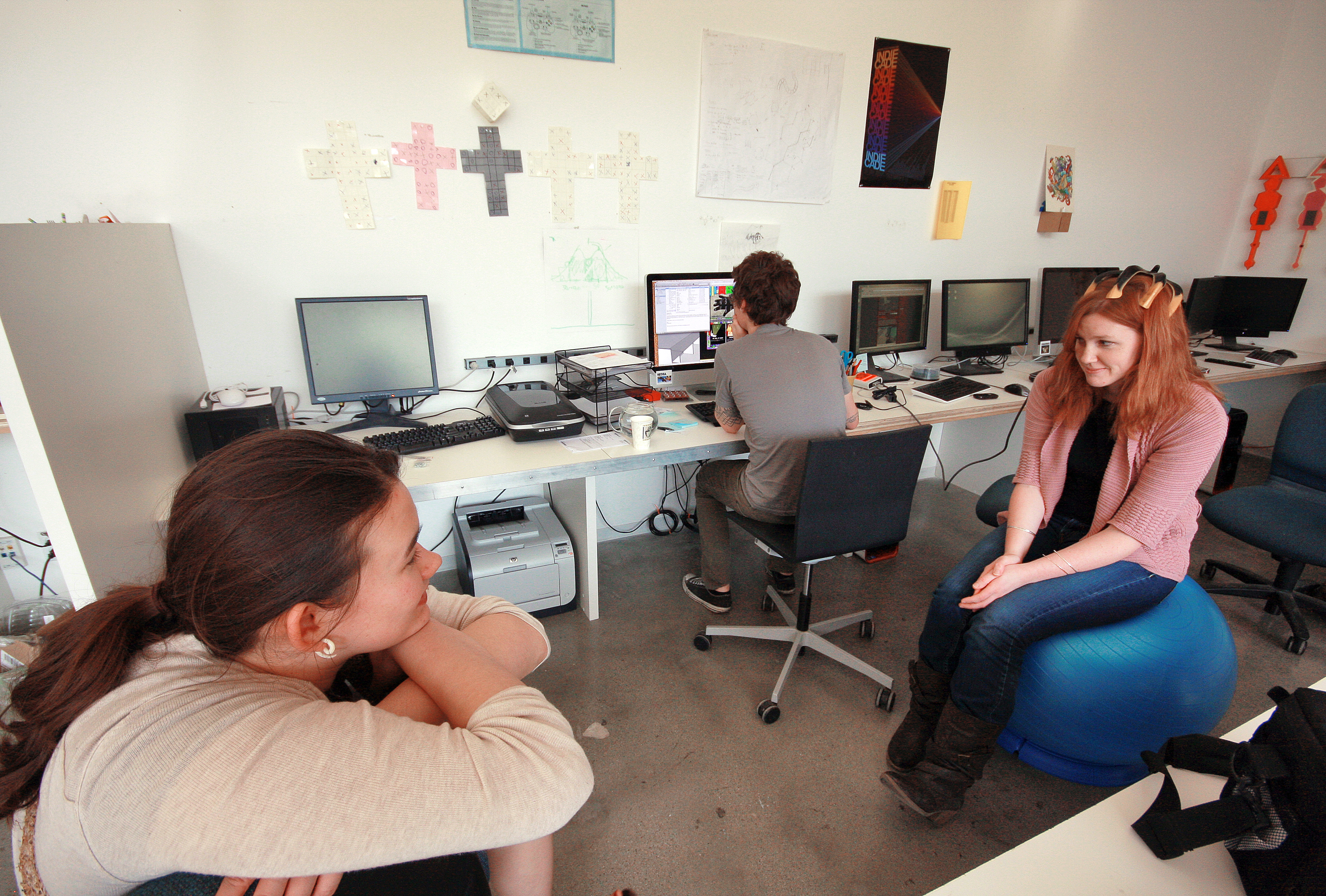UCLA’s game lab, headed by Design | Media Arts Professor Eddo Stern, lets Bruins take the video-game medium to new places

Hayley Greenhalgh, right, a fourth-year Design | Media Arts student, models a sensory capturing device used in game simulation in the UCLA Game Lab.
By Daily Bruin Staff
Jan. 25, 2011 1:40 a.m.
The UCLA Game Lab is a bright, quirky room that looks more fantastical than practical.
One wall is a white board, covered in Expo marker doodles and game jargon. It faces three game consoles and a 60-inch television that sits in front of a couch across the room. Computers, buzzing and blinking, line the other walls, and a white wooden table sits in the center of the room, hiding an old pinball machine underneath.
All these amenities are essential to the lab, where all sorts of games are studied, designed and created.
The lab is directed by Eddo Stern, a professor of Design | Media Arts.
Stern hires students to work on collaborative projects, but also gives them an opportunity to develop their own ideas. Many of these students have taken one of Stern’s courses in gaming and programming.
The lab’s developers often choose nontraditional subjects for their games, like teaching kids how to count in binary or creating an interactive obstacle course for paper airplanes.
“I like that one person can create a complete contained media with tools right at your fingertips,” said Bryan Wuest, a second-year cinema and media studies student who took one of Stern’s classes last spring and now works in the lab.
Adeline Ducker, a fourth-year Design | Media Arts student, is using resources in the lab to further develop a game first conceptualized in Stern’s Gaming 1 course. In Ducker’s game, players control Landon Everett, a man plagued by his disassociate identity disorder. His multiple personalities include a World War II veteran and a manipulative Mormon mother.
“The idea was to create a character that was at conflict with himself,” Ducker said.
Stern said Ducker’s game is a good example of his main objective: to take advantage of the gaming medium’s potential for depth and expand the field into something that’s more than just entertainment.
“Games have great potential for social and cultural impact. We want to push the medium independent of the industry and incorporate more complex narratives and more serious subjects,” Stern said.
One step toward this goal is the “Dark Game,” which allows blind, deaf and non-handicapped participants to play a fully-fleshed adventure. Users wear a headpiece that gives them feedback about their surroundings in the game. The in-game avatar is given certain abilities according to which senses players use.
Another of the lab’s projects is “Flatland,” which uses mobile technology to create a live-action, digital role-playing game.
“Flatland” is loosely based off the 1884 short story of the same name by Edwin Abbott about a two-dimensional world.
The game takes place on an open field, and costumed participants hold colorful, semitransparent wands about two feet long that track their position and allow them to perform actions. The game’s creators hope to debut it this coming summer.
The lab was officially founded last year, but many of its projects have already met with success. For example, a detective computer game that was developed by a student was featured at IndieCade 2010, which showcases independently created games.
Stern said he wants to continue to move away from the mainstream gaming industry and ultimately transform it into a respected art form.
“All of the emotions you might take from a piece of art, I want to bring to a game,” he said.


